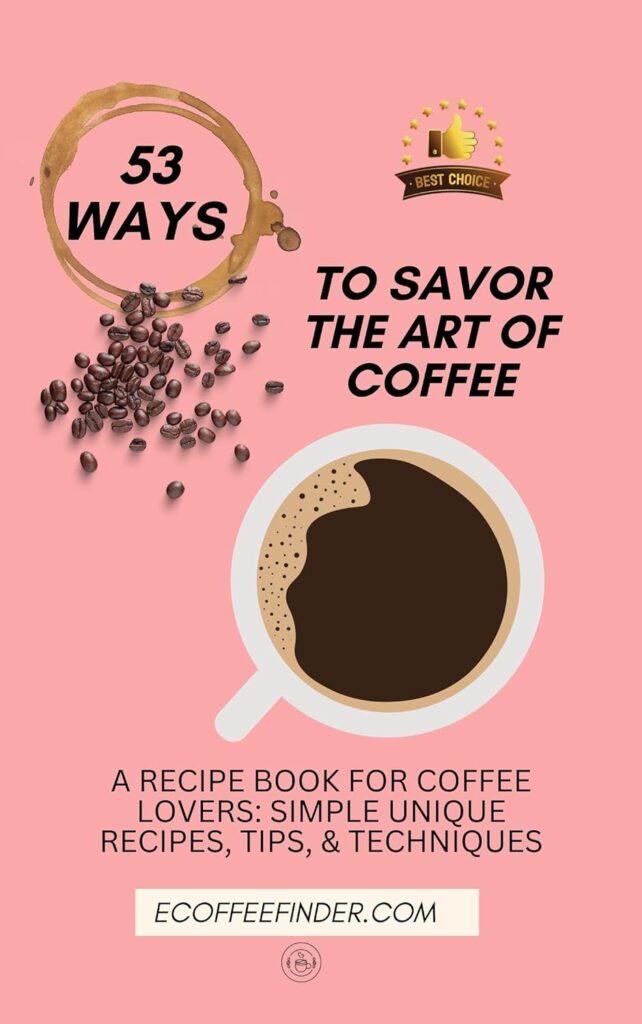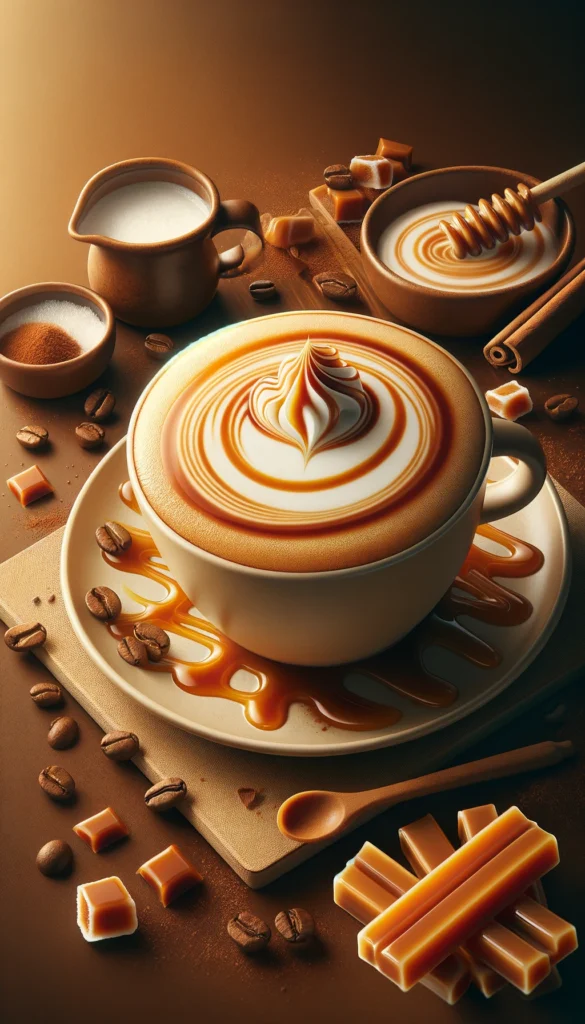Exploring the World of Espresso: The Battle of Flat White vs Latte vs Cappuccino
In the realm of espresso-based drinks, the debate between flat white, latte, and cappuccino enthusiasts is as rich and varied as the coffees themselves. Each drink boasts its unique blend of espresso, milk, and artistry, catering to diverse palates and preferences. This deep dive aims to explore these beloved coffee staples, their origins, nuances, and how they’ve come to define coffee culture around the globe.
The Heart of the Matter: Espresso
Before we dissect the differences between our three contenders, it’s crucial to understand their common core: espresso. This potent coffee brew is made by forcing a small amount of nearly boiling water through finely-ground coffee beans. The result? A concentrated, often thick coffee with a layer of creamy foam, known as crema, on top. It’s this espresso that forms the foundation of many coffee drinks, including the flat white, latte, and cappuccino.
The Art of Espresso
Creating the perfect espresso shot is an art form, requiring precision and care. The grind size, water temperature, and pressure must be meticulously balanced to extract the coffee’s full flavor without bitterness. The ideal espresso shot will have a rich body, balanced acidity, and a sweet, lingering aftertaste, serving as the perfect base for any coffee drink.
The Contenders: Flat White, Latte, and Cappuccino

Now, let’s delve into what sets our three coffee giants apart. While they all share espresso and milk as key ingredients, the ratio between these components and the milk’s treatment create distinct profiles and experiences.
Flat White: The Smooth Operator
Originating from Australia and New Zealand, the flat white has made a significant impact worldwide, known for its velvety texture and espresso-forward flavor. A flat white typically features a higher concentration of espresso compared to milk, with a ratio leaning towards 1:3. The milk is steamed, not frothed, to a microfoam consistency—smooth and velvety, integrating seamlessly with the espresso without overpowering it.
The Key to Perfection: Microfoam
The secret to a flat white’s allure lies in its microfoam. This fine, silky foam is achieved by steaming milk to a point where tiny air bubbles are incorporated, creating a smooth and luxurious texture that blends harmoniously with the espresso. The result is a coffee that’s rich yet balanced, with the espresso’s robust flavors shining through.
Latte: The Creamy Delight
The latte is perhaps the most milk-forward of the trio. Originating from Italy, ‘latte’ literally means ‘milk’ in Italian, emphasizing the drink’s creamy characteristic. A standard latte combines one shot of espresso with about three to four times as much steamed milk, topped with a light layer of frothed milk. This results in a milder coffee flavor, where the sweetness and creaminess of the milk soften the espresso’s punch.
Serving Suggestions
Lattes are typically served in larger cups, which allows for creative latte art on the froth’s surface. This aesthetic element adds to the latte’s appeal, making it a popular choice in cafes worldwide.
Cappuccino: The Perfect Balance
The cappuccino strikes a harmonious balance between espresso, steamed milk, and froth. Traditionally, it consists of equal parts of each, creating a layered effect that’s both visually and texturally appealing. The froth on a cappuccino is airier and thicker than that on a latte, providing a rich and creamy sip that leads into the smooth milk and robust espresso beneath.
The Art of Frothing
Achieving the perfect froth for a cappuccino requires skillful steaming, introducing just enough air to create a velvety, yet dense foam. This not only adds to the drink’s body but also helps to retain the warmth of the espresso, making every sip a perfect blend of flavors and temperatures.
Comparative Analysis: Distinguishing Features
While flat whites, lattes, and cappuccinos share similarities, their key differences lie in the milk to espresso ratio and the texture of the milk used. Here’s a quick breakdown:
- Flat White: Strong espresso presence with velvety microfoam milk, offering a rich yet balanced coffee experience.
- Latte: More milk than coffee, with a creamy texture and a mild, smooth coffee flavor. Perfect for those who prefer their coffee on the lighter side.
- Cappuccino: Equal parts espresso, steamed milk, and froth, delivering a textured and flavorful coffee with a lovely foam cap.
Flat White vs Latte vs Cappuccino Chart
| Feature | Flat White | Latte | Cappuccino |
|---|---|---|---|
| Origin | Australia/New Zealand | Italy | Italy |
| Espresso Content | High (usually a double shot) | Moderate (usually a single shot) | Moderate (usually a single shot) |
| Milk Texture | Smooth, velvety microfoam | Creamy steamed milk | Frothy with a thick layer of foam |
| Milk to Espresso Ratio | Higher espresso to milk | Higher milk to espresso | Balanced (equal parts) |
| Serving Size | Smaller (5-6 oz) | Larger (8-12 oz) | Medium (6-8 oz) |
| Flavor Profile | Strong coffee flavor with creamy texture | Milder coffee flavor, creamy | Rich coffee flavor with frothy texture |
| Ideal For | Those who enjoy a coffee-forward drink with smooth texture | Those preferring a milder, milkier coffee | Coffee lovers who appreciate a frothy, textured drink |
Mastering Milk: Techniques for the Perfect Cup
Whether you’re a home brewer or a professional barista, mastering the milk is crucial for creating any of these drinks. The key lies in the temperature and consistency of the milk foam. For flat whites and lattes, aim for microfoam that is smooth and velvety, enhancing the coffee without overwhelming it. For cappuccinos, a more aerated froth adds a luxurious layer of texture and warmth.
Home Brewing Guide
#Sponsored
Embarking on the journey of home coffee brewing not only satiates your daily caffeine fix but also elevates your appreciation for the subtle art of coffee making. Here’s a concise guide to get you started:
Equipment Essentials:
- Espresso Machine: A good quality machine is pivotal for extracting rich and balanced espresso shots.
- Burr Grinder: Consistent, fine coffee grounds are key for espresso. A burr grinder ensures uniformity.
- Milk Frother or Steam Wand: For lattes and cappuccinos, achieving silky, frothed milk is essential.
- Scales: Precision in coffee-to-water ratio makes a world of difference.
- Tamper: Ensures even compression of coffee grounds for uniform extraction.
Brewing Tips:
- Freshness Matters: Use freshly roasted beans and grind them just before brewing.
- Water Quality: Use filtered water to avoid off-flavors.
- Milk Temperature: Overheating milk can ruin its sweetness. Aim for 60-65°C (140-149°F).
- Practice: Mastering espresso takes time. Experiment with grind size, tamping pressure, and extraction times.

Try these Flat White Recipes
Classic Flat White Recipe

Ingredients:
- Double shot of espresso (about 60 ml or 2 oz)
- 150 ml (about 5 oz) whole milk
Instructions:
- Brew Espresso: Start by brewing a double shot of espresso into a warm cup. Use freshly ground coffee beans for the best flavor.
- Steam Milk: While your espresso is brewing, steam your milk to achieve smooth, velvety microfoam. Aim for a temperature of about 60-65°C (140-149°F). The goal is to create a creamy texture without large bubbles.
- Combine: Gently pour the steamed milk over the espresso, starting from the center and moving in a circular motion. Aim to integrate the milk with the espresso, creating a smooth, silky texture. Serve immediately.
Honey Almond Flat White Recipe

Ingredients:
- Double shot of espresso
- 150 ml (about 5 oz) almond milk
- 1 tablespoon honey
- A pinch of cinnamon (optional)
Instructions:
- Prepare Espresso: Brew a double shot of espresso into a warm cup.
- Infuse Honey: Heat the almond milk gently without letting it boil. Whisk in the honey until fully dissolved. This step adds a sweet, nuanced flavor to the milk.
- Steam Milk: Steam the honey-infused almond milk to create microfoam. Remember, almond milk may not froth as much as whole milk but aim for the smoothest texture possible.
- Combine and Serve: Pour the steamed honey almond milk over the espresso, creating a delicate blend. Sprinkle a pinch of cinnamon on top for an extra layer of flavor. Enjoy the sweet, nutty twist on the classic flat white.
Caramel Flat White Recipe

Ingredients:
- Double shot of espresso
- 150 ml (about 5 oz) whole milk
- 2 tablespoons caramel sauce, plus extra for drizzling
Instructions:
- Brew Espresso: Brew your double shot of espresso directly into a warm cup.
- Infuse Milk with Caramel: Before steaming the milk, mix in the caramel sauce thoroughly. Warm the milk slightly if needed to help dissolve the caramel.
- Steam Milk: Steam the caramel-infused milk to create a creamy, velvety microfoam. The caramel will add a rich, sweet flavor to the milk.
- Combine: Gently pour the steamed caramel milk over the espresso. Aim for a harmonious blend of the espresso’s bitterness with the sweetness of the caramel.
- Garnish and Serve: Drizzle a small amount of caramel sauce over the top for garnish. Enjoy your decadent, sweet caramel flat white as a luxurious treat.
Each of these recipes offers a unique take on the classic flat white, allowing you to explore different flavors and textures. Whether you prefer the traditional method or something with a sweet twist, these recipes are sure to enhance your coffee experience.
Conclusion: Celebrating Diversity in Every Cup
The world of espresso-based drinks is a testament to the diversity and creativity of coffee culture. Whether you prefer the smoothness of a flat white, the creaminess of a latte, or the balanced richness of a cappuccino, there’s a coffee out there for every palate. By understanding the nuances that make each drink unique, coffee lovers can deepen their appreciation for their favorite brews and perhaps discover new favorites along the way.
So next time you’re sipping on your coffee of choice, take a moment to savor the craftsmanship that went into creating that perfect cup. After all, it’s the love and passion for coffee that brings us all together, in search of that ultimate espresso experience.
Frequently Asked Questions (FAQs)
What is the main difference between a flat white, latte, and cappuccino?
The main differences lie in the milk to espresso ratio and the texture of the milk. A flat white has a higher espresso concentration with velvety microfoam milk, a latte has more steamed milk making it creamier and milder in coffee flavor, and a cappuccino is characterized by equal parts of espresso, steamed milk, and a thick layer of froth.
Can I make these espresso drinks without an espresso machine?
While traditional espresso machines are ideal for creating the perfect espresso base, there are alternatives. Stovetop espresso makers (Moka pots) or Aeropress can produce a strong coffee base similar to espresso. However, achieving the exact texture and temperature of steamed milk without a steam wand can be challenging but not impossible with practice and the right tools, like a manual milk frother.
How do I achieve the perfect milk froth at home?
For the perfect milk froth, use fresh, cold milk (whole milk froths best due to its fat content). Heat it to between 60-65°C (140-149°F), avoiding boiling to prevent scalding the milk. If using a steam wand, insert it just below the milk’s surface to create microfoam, moving it lower as the milk froths. Manual frothers or electric frothing wands can also create good froth, though it may take practice to get the right consistency.
What is microfoam, and why is it important?
Microfoam is milk that has been steamed to incorporate tiny bubbles, creating a smooth, velvety texture. It’s essential for coffee drinks like the flat white and latte because it blends seamlessly with the espresso, enhancing the drink’s overall flavor and mouthfeel without overpowering the coffee’s natural tastes.
Can I add flavors to these espresso drinks?
Absolutely! Syrups and flavorings can be added to any espresso drink to suit your taste preferences. Vanilla, caramel, and hazelnut are popular choices. Add the syrup to the milk before steaming for a more integrated flavor, or drizzle over the top for a decorative finish. Remember, adding flavors can alter the traditional taste profile of the drinks.
Is there a vegan alternative to milk for these drinks?
Yes, there are several plant-based milks available that can be used as alternatives to dairy milk. Soy, almond, oat, and coconut milk are popular choices for coffee drinks. Each has its unique flavor profile and frothing characteristics, with oat milk being particularly well-regarded for its ability to create a creamy texture similar to dairy milk.
How can I make an iced version of these drinks?
To make an iced version, simply prepare your espresso as usual, then let it cool slightly before pouring over ice. Add cold, frothed milk on top. For iced flat whites or lattes, you may want to use less milk since there’s no heat to integrate the milk and espresso. For an iced cappuccino, consider using a cold foam made from milk frothed at a cool temperature to achieve a similar texture to its hot counterpart.

